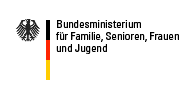Development of antidiscrimination policy in the USA
Development of antidiscrimination policy in the USA
Unlike Germany and most European countries, the USA has a long tradition of antidiscrimination policy. In 1964, because of the broad mobilization of the black Civil Rights movement, a Civil Rights Act was passed, Chapter VII of which prohibits discrimination on grounds of skin colour (“race”), origin, religion and sex. The law created a basis for the enforcement of a ban on discrimination in access to jobs and in promotion, i.e. guaranteeing equal treatment in respect of integration into working life.
The national equal treatment authority established in this connection, the “Equal Employment Opportunity Commission” (EEOC), was given the job of looking at complaints from employed people and seeing that conditions that have been imposed are adhered to. Moreover, in 1972 the EEOC was given the power to take legal action. This has proved to be an effective instrument against the backdrop of jurisdiction pledged to antidiscrimination law which has imposed fines amounting to millions on employers found guilty of discrimination (Bednarz-Braun, 2000, p. 38 f.). However, these millions of dollars are seldom paid to the victims directly, since they are treated in the US legal system in the same way as fees are in Europe.
Antidiscrimination legislation in the USA is also an expression of a strong liberal legal tradition, in which freedom from discrimination is interpreted as a direct extension of an individual legal right (von Wahl, 1999).
Parallel to this, positive measures (affirmative action) have also been established in the USA starting in the mid-1960s, which are intended to prevent the occurrence of discrimination and actively promote equality of opportunity in working life. The target group are employees who have traditionally suffered discrimination, like women, ethnic minorities and people with skin of a colour that is not white. Positive measures include promotion plans and target quotas for disadvantaged groups in the civil service and in contractual partners of the state from private industry, as well as the award of public contracts according to quotas. The detail of all these measures is still disputed and they are constantly the subject of legal suits. It is, however, in comparison, conspicuous that it is precisely private organizations that are aggressively using affirmative action (or diversity management, which has a similar goal), since they recognize the positive impact of meaningful measures against exclusion.
The national equal treatment authority established in this connection, the “Equal Employment Opportunity Commission” (EEOC), was given the job of looking at complaints from employed people and seeing that conditions that have been imposed are adhered to. Moreover, in 1972 the EEOC was given the power to take legal action. This has proved to be an effective instrument against the backdrop of jurisdiction pledged to antidiscrimination law which has imposed fines amounting to millions on employers found guilty of discrimination (Bednarz-Braun, 2000, p. 38 f.). However, these millions of dollars are seldom paid to the victims directly, since they are treated in the US legal system in the same way as fees are in Europe.
Antidiscrimination legislation in the USA is also an expression of a strong liberal legal tradition, in which freedom from discrimination is interpreted as a direct extension of an individual legal right (von Wahl, 1999).
Parallel to this, positive measures (affirmative action) have also been established in the USA starting in the mid-1960s, which are intended to prevent the occurrence of discrimination and actively promote equality of opportunity in working life. The target group are employees who have traditionally suffered discrimination, like women, ethnic minorities and people with skin of a colour that is not white. Positive measures include promotion plans and target quotas for disadvantaged groups in the civil service and in contractual partners of the state from private industry, as well as the award of public contracts according to quotas. The detail of all these measures is still disputed and they are constantly the subject of legal suits. It is, however, in comparison, conspicuous that it is precisely private organizations that are aggressively using affirmative action (or diversity management, which has a similar goal), since they recognize the positive impact of meaningful measures against exclusion.
erstellt von Administrator
—
zuletzt verändert:
02.01.2010 20:07





